Chili - The Spice of Life
Chili, a beloved spice used worldwide, is a versatile ingredient that adds depth, flavor, and heat to any dish. Known for its rich, spicy kick, chili peppers come in various forms, including fresh, dried, powdered, and as chili sauce or oil. Whether you're an adventurous cook or someone who enjoys adding a touch of heat to your meals, chili products offer the perfect solution.
Fresh Chili Peppers are vibrant, juicy, and packed with heat. From mild to extremely spicy varieties, fresh chilies can be sliced, diced, or used whole to infuse dishes with their pungent aroma. Great for stir-fries, salsas, and curries, fresh chilies add a fresh and bold flavor to your meals.
Dried Chili Peppers are perfect for slow-cooking and flavor extraction. When dried, chilies intensify their heat and smokiness. You can use them whole, ground into chili powder, or rehydrate them to create sauces and soups with a complex depth of flavor.
Chili Powder is a staple in kitchens around the world. A blend of dried chili peppers and other spices like cumin and garlic, chili powder adds a punch of heat and a savory aroma to dishes. Perfect for seasoning meats, soups, stews, and even grilled vegetables, chili powder offers convenience without compromising on flavor.
Chili Sauces and Oils are excellent for those who prefer a ready-to-use option. These products combine chili with ingredients like garlic, vinegar, or sesame oil to create flavorful sauces and oils that elevate your dishes instantly. Whether you like it sweet, tangy, or fiery, chili sauces and oils are perfect for dipping, marinating, or adding to your favorite foods.
Enhance your culinary creations with chili – a bold, flavorful ingredient that brings spice and excitement to every meal!
-
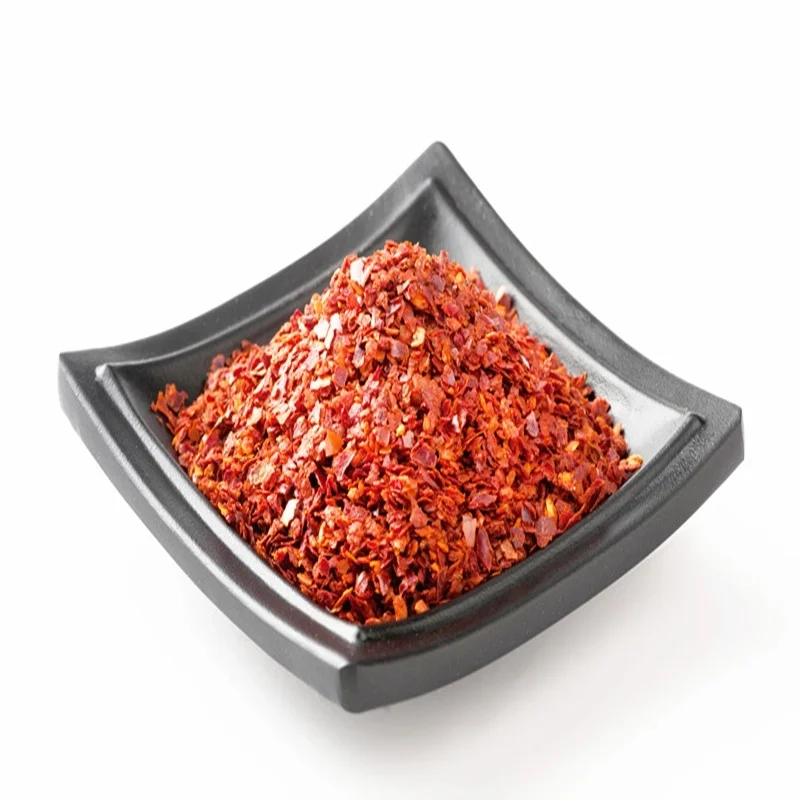
Gochugaru
2000-6000SHUNke a gochugaru bụ 100% eke na-enweghị ihe mgbakwunye ọ bụla, ngwaahịa anyị dị mma maka pickling, karịsịa na Korean Kimchi Ezi ntụziaka. N'ịbụ ndị ọtụtụ ụdị kimchi ndị Korea tụkwasịrị obi, gochugaru anyị na-ahụ maka izi ezi ma kwalite ụtọ ọdịnala. Bulite ahụmịhe ị na-eri nri na Gochugaru adịchaghị ọnụ - nhọrọ dị ọcha maka ndị na-achọ ịdị mma na-enweghị isi n'ịmepụta nri dị ụtọ na ezigbo nri ndị Korea. Jiri gochugaru anyị pụrụ iche chọọ isi ihe dị na nri nri Korea, ebe ịdị ọcha na-ezute ihe nketa bara ụba nke ịma mma.
-
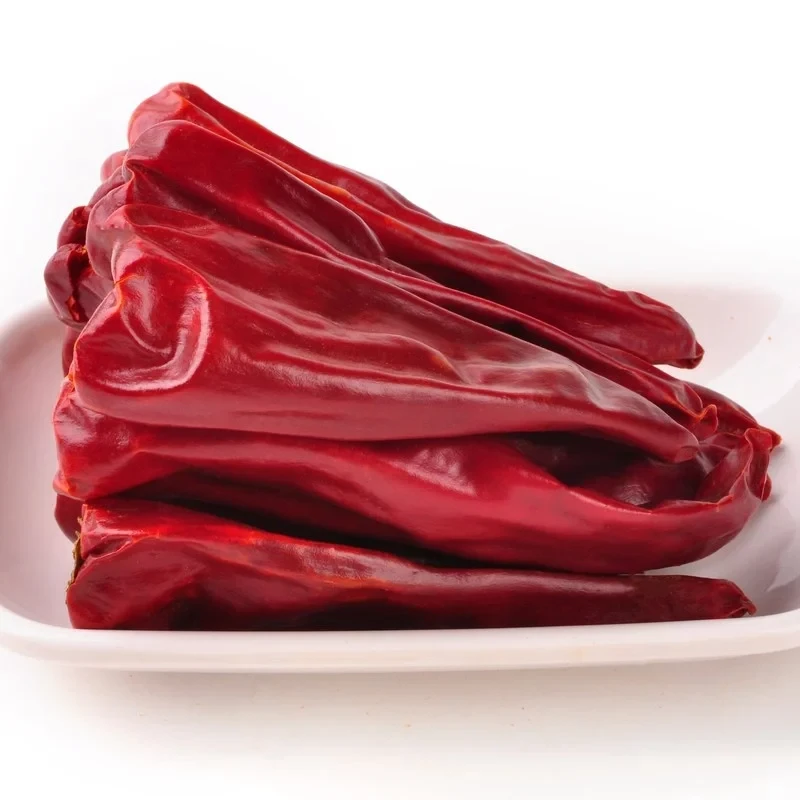
Yidu chili akpọnwụwo
3000-5000SHUChili Yidu a mịrị amị bụ nke a na-eji nlezianya họrọ ma kpochaa anwụ, na-echekwa àgwà okike ha na ụzọ mmepụta omenala, na-ebute ihe oriri na-edozi ahụ. Ọ bụ ihe okike 100% na-enweghị mgbakwunye ọ bụla, na-egosipụta ụcha uhie na-acha uhie uhie, ekpomeekpo pụrụ iche, ose na-agbanwe agbanwe, yana ịdị mma pụtara ìhè. Ọ na-eje ozi dị ka isi nri ọzọ dị mma, na-enye ndị na-azụ ahịa ohere ịhazigharị ọkwa nke ose dị na efere ha dabere na mmasị onwe onye. Àgwà pụrụ iche nke chili Yidu a mịrị amị na-eme ka ọ bụrụ nhọrọ na-adọrọ adọrọ maka ndị na-anụ ọkụ n'obi.
-
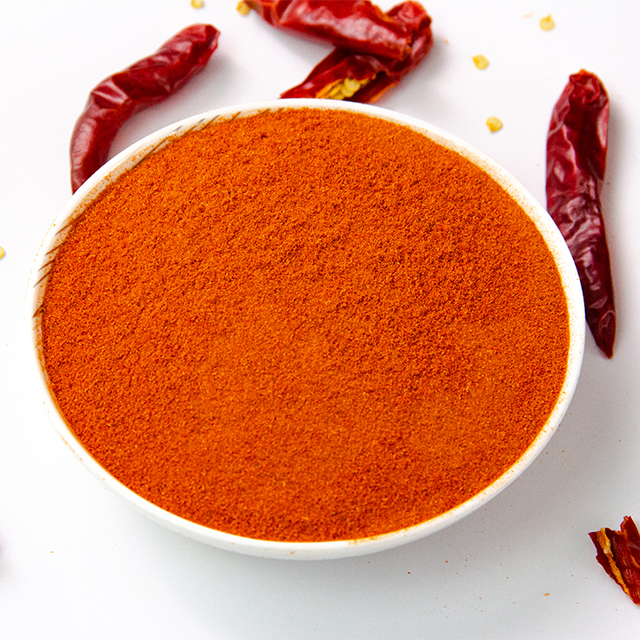
Chili ntụ ntụ-10,000-15,000SHU
10,000-1,5000SHUUzuzu chili a bụ ihe dị mma nke na-agbakwunye ekpomeekpo na ikpo ọkụ n'ụdị efere dị iche iche. E sitere na ose chili kacha mma, a na-emepụta ngwaahịa anyị na nkenke iji zute ụkpụrụ kachasị elu nke ịdị mma na uto.
-
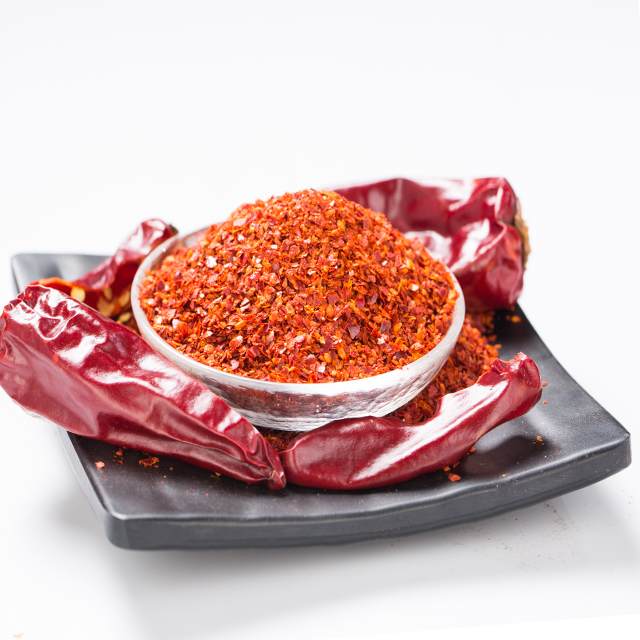
Paprika dị ụtọ gwepịara
Ọ bụghị oseoseNke a na-atọ ụtọ paprika egwepịara bụ 100% dị ọcha, enweghị ntụpọ, ebu, na Sudan Red. Ngwaahịa anyị na-ekwe nkwa ịdị ọcha na ịdị mma, na-ahụ na mgbakwunye na-atọ ụtọ na efere gị. Na-enweghị ntụpọ na njikwa mma siri ike, ọ na-eguzo dị ka nhọrọ a pụrụ ịdabere na ya maka ndị na-anụ ọkụ n'obi. Jiri paprika dị ụtọ dị ụtọ bulie ihe okike gị, na-ebuga àgwà na-enweghị atụ yana mgbakwunye na-enweghị ntụpọ na nri ọkacha mmasị gị. Tụkwasa obi na ịdị ọcha nke ngwaahịa anyị maka ahụmịhe nri dị mma ma dị ụtọ.
-
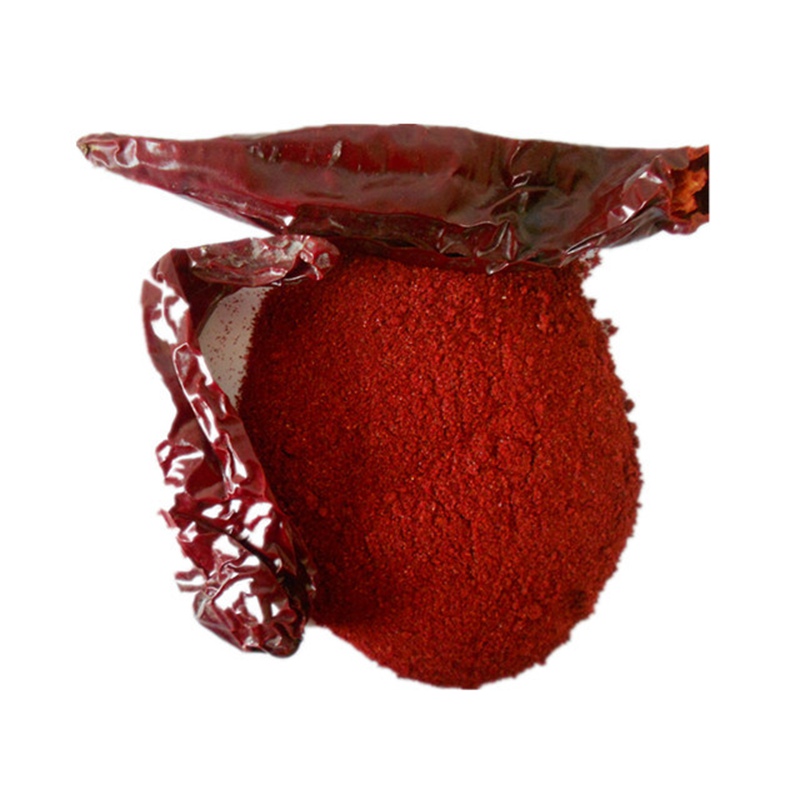
Paprika ntụ ntụ dị ụtọ
Ọ bụghị oseoseNke a na-atọ ụtọ paprika ntụ ntụ bụ 100% eke na-enweghị ihe mgbakwunye ọ bụla, na-egosipụta agba na-acha uhie uhie, ekpomeekpo pụrụ iche na àgwà pụtara ìhè. Ọ bụ ihe na-esi ísì ụtọ na-adịghị esi ísì ụtọ nke a pụrụ iji mee ka agba nke efere dị mma, na-eme ka ọ bụrụ ihe na-adọrọ adọrọ. Àgwà pụrụ iche nke ntụ ntụ paprika anyị dị ụtọ na-eme ka ọ bụrụ nhọrọ dịgasị iche iche na-adọrọ mmasị maka ndị na-anụ ọkụ n'obi.
Paprika ntụ ntụ anyị na-atọ ụtọ na-enye nhọrọ nhazi maka agba dị iche iche, na nkwakọ ngwaahịa. anyị na-agba mbọ nabata mkpa nhazi nhazi dị iche iche.
-
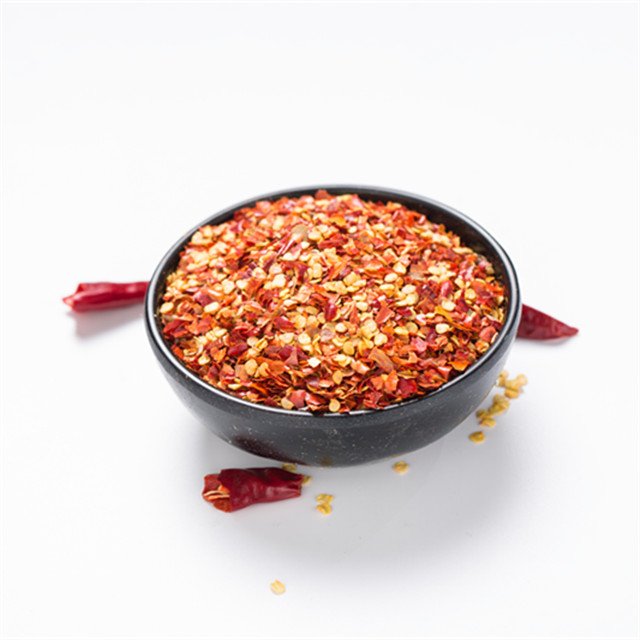
chili egweri-40,000-50,000SHU
40,000-50,000SHUỤlọ ọrụ anyị bụ ebe a na-emepụta ihe ọhụrụ na-esi ísì ụtọ, na-enye ngwaahịa dị iche iche, gụnyere ose na-acha uhie uhie, ntụ ntụ chili, chili mịrị amị, mpekere chili na mmanụ chili. Ahịrị ngwaahịa anyị buru ibu na-egbo mkpa nri nri dị iche iche, site na ịgbakwụnye ọkụ ọkụ na pizzas na pastas ruo na-etinye ekpomeekpo bara ụba n'ime stews na ofe. Ngwaahịa ọ bụla dị na mkpokọta anyị enwetala asambodo EU a ma ama, na-agba akaebe na nkwa anyị siri ike maka ịdị mma. Jiri ngwa nri adịchaghị mma bulite ihe nri nri gị, emebere ya maka ịdị iche iche na eziokwu, na-ahụta ahụmịhe na-atọ ụtọ ma na-atọ ụtọ na ọnọdụ kichin ọ bụla.
-
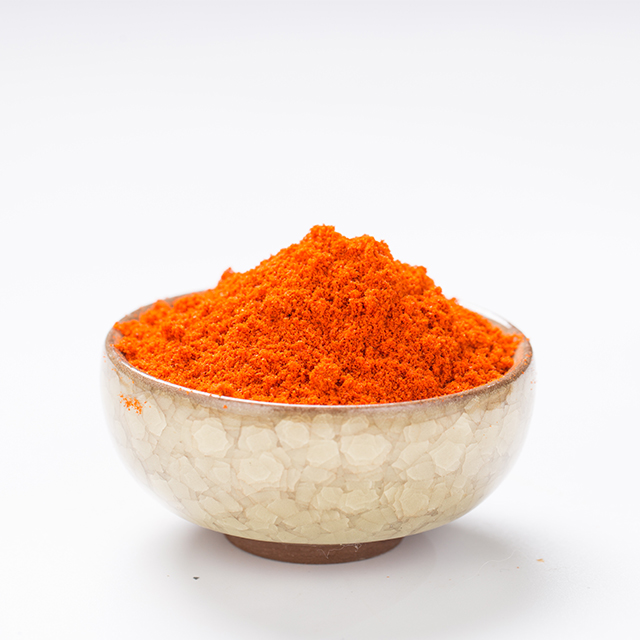
chili ntụ ntụ-600,000SHU
60,0000SHUUzuzu chili a bụ ihe okike 100% na-enweghị mgbakwunye ọ bụla, na-egosipụta agba uhie na-acha ọbara ọbara, ekpomeekpo pụrụ iche, ose na-agbanwe agbanwe, na ọmarịcha ọmarịcha. Ọ na-eje ozi dị ka isi nri ọzọ dị mma, na-enye ndị na-azụ ahịa ohere ịhazigharị ọkwa nke ose dị na efere ha dabere na mmasị onwe onye. Àgwà pụrụ iche nke ntụ ntụ chili anyị na-eme ka ọ bụrụ nhọrọ na-adọrọ adọrọ maka ndị na-anụ ọkụ n'obi.
ntụ ntụ chili anyị na-enye nhọrọ nhazi maka ọkwa ose dị iche iche, agba, na nkwakọ ngwaahịa. anyị na-agba mbọ nabata mkpa nhazi nhazi dị iche iche.
-
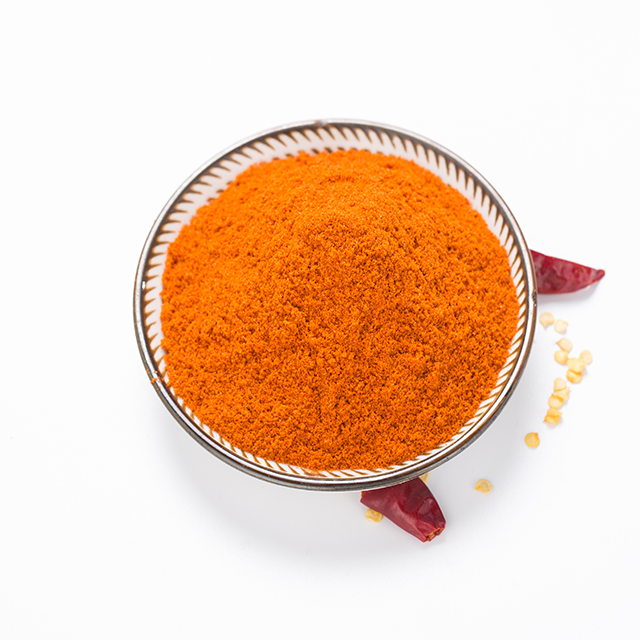
chili ntụ ntụ-70,000-80,000SHU
70,000-80,000SHUntụ ntụ chili bụ nke ama ama maka ịdị mma ya kachasị mma, ọ dị ọcha na enweghị mgbakwunye. Anyị ji mpako na-ebuga ngwaahịa karịrị ụkpụrụ, na-enweta otuto site na mbupụ buru ibu na United States, European Union, na mba ndị ọzọ. Họrọ ntụ ntụ chili anyị maka ahụmịhe nri nri dị oke ọnụ, nke ụtọ pụrụiche mara yana ntinye aka na ịdịmma nke mebere anyị dị ka onye na-ebubata ntụkwasị obi n'ahịa ụwa.
-
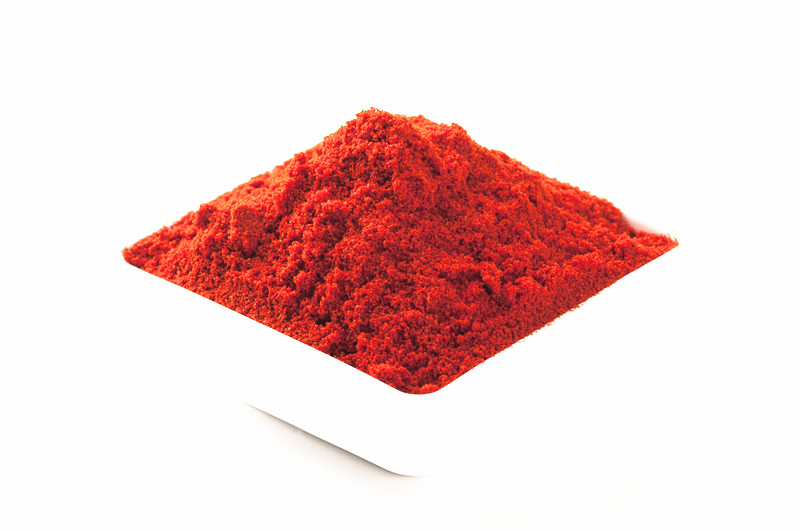
chili ntụ ntụ-50,000SHU-60,000SHU
50,000-60,000SHUChili ntụ ntụ pụtara dị ka nhọrọ dị oke ọnụ - dị ọcha, enweghị mgbakwunye, na enweghị gluten. E sitere na ose chili kacha mma, ngwaahịa anyị na-ekwe nkwa inwe ezigbo ahụmịhe ose. N'efu na mgbakwunye na gluten, ọ na-enye mmetụ dị mma ma dị mma na ihe okike gị. Họrọ ntụ ntụ chili anyị maka ekpomeekpo dị ọcha yana njem nri siri ike!
What Is The Trick To A Good Chili?
Chili, a beloved spice used worldwide, is a versatile ingredient that adds depth, flavor, and heat to any dish. Known for its rich, spicy kick, chili peppers come in various forms, including fresh, dried, powdered, and as chili sauce or oil. Whether you're an adventurous cook or someone who enjoys adding a touch of heat to your meals, chili products offer the perfect solution.
Fresh Chili Peppers are vibrant, juicy, and packed with heat. From mild to extremely spicy varieties, fresh chilies can be sliced, diced, or used whole to infuse dishes with their pungent aroma. Great for stir-fries, salsas, and curries, fresh chilies add a fresh and bold flavor to your meals.
Dried Chili Peppers are perfect for slow-cooking and flavor extraction. When dried, chilies intensify their heat and smokiness. You can use them whole, ground into chili powder, or rehydrate them to create sauces and soups with a complex depth of flavor.
Chili Powder is a staple in kitchens around the world. A blend of dried chili peppers and other spices like cumin and garlic, chili powder adds a punch of heat and a savory aroma to dishes. Perfect for seasoning meats, soups, stews, and even grilled vegetables, chili powder offers convenience without compromising on flavor.
Chili Sauces and Oils are excellent for those who prefer a ready-to-use option. These products combine chili with ingredients like garlic, vinegar, or sesame oil to create flavorful sauces and oils that elevate your dishes instantly. Whether you like it sweet, tangy, or fiery, chili sauces and oils are perfect for dipping, marinating, or adding to your favorite foods.
Enhance your culinary creations with chili a bold, flavorful ingredient that brings spice and excitement to every meal!
Why Are Peppers Called Chili?
The term "chili" is often used to refer to various types of hot peppers, but its origin and usage are a bit more complex. Here’s why peppers are called "chili":
1.Etymology from Nahuatl (Aztec language):
The word "chili" comes from the Nahuatl language, which was spoken by the Aztecs and other indigenous peoples in Mesoamerica. In Nahuatl, the word for pepper is "ch? lli". The Aztecs and other native groups in Central and South America cultivated and used chili peppers long before Europeans arrived, and they were integral to their cuisine.
When Spanish explorers encountered these peppers in the Americas in the 15th and 16th centuries, they adopted the Nahuatl word "ch? lli" to describe them. The term eventually made its way into other languages, including English, where it became commonly used.
2. Naming Confusion and Global Spread:
The word "chili" is used differently around the world. In many places, "chili" refers to the fruit of the Capsicum plant, which can be used fresh, dried, or powdered to add heat to food. However, when used in the context of chili con carne (the famous spicy stew), the name "chili" specifically refers to the dish made with ground meat, chilies, beans, tomatoes, and spices.
In the U.S. and many English-speaking countries, the term "chili" has become synonymous with hot peppers, especially Capsicum annuum, which includes common varieties like jalapenos, serranos, and cayennes. However, in other parts of the world, like India and some parts of Asia, the term "chili" often refers to the spicier varieties of Capsicum that are commonly used in their cuisines.
3. "Chili" vs. "Chili Pepper":
In the 17th century, when Christopher Columbus brought the peppers back to Europe, they were initially thought to be a type of pepper (which they resemble in taste and appearance). The name “pepper” had already been used to describe the spicy fruit of the Piper nigrum plant (black pepper), and this led to the widespread use of the term "pepper" for the Capsicum family, despite them being botanically unrelated. Over time, the term "chili pepper" was adopted in many languages to differentiate the spicy peppers from black pepper.
In this sense, "chili" became shorthand for chili pepper, the pepper that imparts heat, especially from the Capsicum family, which includes many varieties of peppers that vary in heat intensity.
4. Cultural Influence and Usage:
The spread of chili peppers around the world, particularly after the Columbian Exchange (which was the exchange of plants, animals, and cultures between the Americas and the Old World), played a significant role in shaping global cuisine. As chili peppers became more commonly used in a wide range of dishes, the name “chili” was often applied to dishes and recipes that incorporated these peppers, such as chili con carne, chili oil, and chili sauce.
In summary, "chili" is derived from the Nahuatl word for pepper, "ch? lli", and has evolved in usage due to its widespread adoption in cuisines around the world. It’s used to refer to both the pepper itself and the dishes made with it, particularly those that are spicy and contain peppers.








